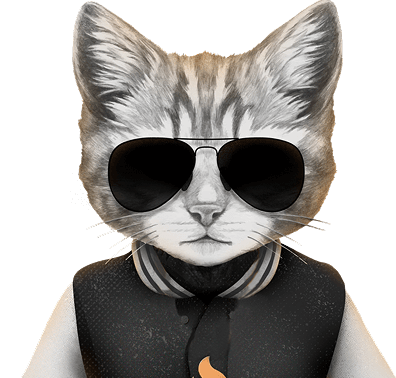
Influencer trends move quickly, and by the time someone goes viral, most brands have already missed the window to connect early. Finding rising creators before they blow up is a real advantage, but many marketers still rely on instinct or slow manual research. We wrote this article to show how AI can help. By spotting early signs of growth and engagement, AI gives brands a way to discover new talent sooner and build meaningful partnerships before the competition steps in.
Finding the next big creator before everyone else does isn’t luck, it’s actually pattern recognition. AI can track influencer growth, audience shifts, and engagement signals in real time, helping brands spot rising talent before they go mainstream. This article explains how AI-powered tools give marketers that early advantage and why it matters for campaign planning.
Picking the right influencers is never an easy job, moreover when brands have to select from millions of influencers. Sometimes, finding a good fit is not enough — brands must be strategic and quick to secure a beneficial partnership with an up-and-coming influencer. Collaborating with rising influencers can bring considerable benefits compared to partnering with established influencers, who more often than not carry hefty price tags and lower engagement rates.
Furthermore, surveys show that 82% of people on social media are more likely to trust recommendations from smaller influencers than bigger ones.
But how do brands manage to catch these influencers when the iron's still hot? That is for an AI-powered influencer marketing tool to help with.
If your brand is looking to spot such rising stars before anyone else does, let us take you through how to do that using artificial intelligence.
Key takeaways:
Four early signals matter most: engagement spikes, fast follower growth, content that travels across platforms, and a jump in mentions or collabs - and this can be detected early by AI.
Partnering early is cheaper and performs better. Brands can save up to 90 % on fees, while rising creators often post engagement rates around 8.7 %.
Early partnerships with rising influencers often lead to better pricing and longer-term collaboration.
Spotting potential early can also reduce competition and increase campaign agility.
Early Signs an Influencer Is Going Viral
Before an influencer blows up on social media, there are always telltale signs of their growing popularity. Being able to track these signs early makes a brand have a better chance of finding future stars before they become too expensive or too busy for new collaborations.
Let’s break down these signals and see how they help forecast influencer success.
Unusual Engagement Spikes
 One of the first signs that an influencer is about to go viral is a sudden rise in engagement. The likes, comments, shares, and saves they got suddenly spiked way beyond their usual numbers. This often happens when a post resonates deeply with their audience, sparks conversations, or gets amplified by bigger accounts.
One of the first signs that an influencer is about to go viral is a sudden rise in engagement. The likes, comments, shares, and saves they got suddenly spiked way beyond their usual numbers. This often happens when a post resonates deeply with their audience, sparks conversations, or gets amplified by bigger accounts.
Unfortunately, not every spike is a good sign. Some spikes may result from fraudulent activities, such as buying engagement or using bots and automation. On the other hand, spikes don’t always mean long-term success — some influencers experience a viral moment but fail to maintain their momentum.
Sudden Follower Growth in a Short Period
 Another clear sign that an influencer is gaining attention is an unusual increase of followers in a very short span of time, which can happen for various reasons: their content was featured on a large page, shared by a celebrity, or maybe an algorithm from TikTok or Instagram Reels blew them up.
Another clear sign that an influencer is gaining attention is an unusual increase of followers in a very short span of time, which can happen for various reasons: their content was featured on a large page, shared by a celebrity, or maybe an algorithm from TikTok or Instagram Reels blew them up.
However, not all follower growth is meaningful. Some influencers build followers through giveaways or paid promotions, which often results in low engagement and drop-offs. Just like an engagement spike, massive and rapid follower growth can also result from fraudulent activities such as buying followers, using hacked or stolen accounts, or employing follow-unfollow tactics.
AI tools can help brands determine whether an influencer’s growth comes from organic audience interest or from artificial methods.
By tracking where new followers come from, how many of them really engage with the influencer’s content, and whether the growth is stable or temporary, brands can get a clearer understanding if an influencer is actually in a growing phase of their online career or just experiencing a spike.
Content Performance Across Multiple Platforms
When an influencer’s content starts performing well on multiple platforms at the same time, this is usually a strong indication that they are going viral. Some influencers are highly successful on one single platform, but the breakout ones will have their content reposted, shared, and remade on TikTok, Instagram, YouTube Shorts, and even Twitter. If they experience this high engagement on all platforms, brands may want to take note, since this is a strong signal that the influencer may soon become famous.
Increasing Mentions and Collaborations
When an influencer starts to appear in conversations more frequently, whether in comments, media articles, or collaborations with bigger creators, that’s a very strong sign that they’re on the rise. That could be anything from direct mentions to people tagging their content to featuring in the discussions on trending topics.
At this stage, brands, larger influencers, and media outlets begin to take notice, which will increase their visibility. In this matter, AI tools can help brands track how often an influencer is mentioned, who is mentioning them, and how these mentions contribute to their growth.
Why It’s Important for Brands to Collaborate with Rising Influencers
 Working with rising influencers offers brands unique advantages that are more than visibility. Influencers at this tier are still in their growth phase, which means they are actively building their audience, refining their content, and engaging more personally with their followers. Their influence is expanding, and brands that recognize this early can benefit from doing so in a number of ways. These are the reasons why rising influencers are worth investing in:
Working with rising influencers offers brands unique advantages that are more than visibility. Influencers at this tier are still in their growth phase, which means they are actively building their audience, refining their content, and engaging more personally with their followers. Their influence is expanding, and brands that recognize this early can benefit from doing so in a number of ways. These are the reasons why rising influencers are worth investing in:
Cost-Effective Partnerships Before Fees Increase
Partnering with influencers when they are still emerging means brands can settle collaborations at more affordable rates, because once an influencer goes viral, their partnership fees skyrocket. An article by Meltwater shows that a nano-influencer on Instagram (1K–10K followers) charges around $10–$100 per post, while a macro-influencer (100K–1M followers) can charge $1,000–$10,000+ per post. This indicates that brands that partner early can save up to 90% on influencer marketing costs.
Higher Engagement and Trust from Their Audience
Studies have proved that smaller influencers, particularly nano and micro-influencers, tend to have higher engagement rates than larger ones. This is because their audiences are more niche, dedicated, and actively engaged with their content. The same applies with rising influencers, who often build strong, personal connections with their followers. Their followers actively interact, comment, and share their posts due to this approach.
At the end of the day, this creates a sense of trust and authenticity that bigger influencers sometimes struggle to maintain. According to a report, nano-influencers (1,000–10,000 followers) can have engagement rates as high as 8.7%, outpacing what mega-influencers experience at 1.7% rates.
This trust not only increases engagement, but also converts into purchasing decisions. According to Shopify, 69% of consumers trust influencers’ recommendations over information directly from brands. When an influencer genuinely supports a product or service, their audience is more likely to take action, whether it’s making a purchase, signing up for a service, or engaging with a brand.
Short-Term and Long-Term Benefits
By identifying an emerging influencer and partnering with them early, a brand can tap into emerging trends before they go mainstream. AI-powered influencer discovery lets brands predict which creators are soon-to-become trendsetters. For example, if a brand partners with an up-and-coming gaming creator before the creator explodes in popularity, they can position themselves as a go-to sponsor in the gaming niche ahead of other brands. This early investment not only helps brands get valuable collaborations at a lower cost but also positions them as a key player in a growing space.
Apart from the short-term benefits, partnering with rising influencers can also lead to long-term relationships. Growing influencers tend to stay loyal to the brands that supported them in the early days. The results are: consistent brand promotions, repeated collaborations, and a more genuine connection with their followers. This way, a brand can build a strong, lasting presence in its target market.
How AI Finds Emerging Influencers
The ability to find emerging influencers before they hit the mainstream gives a brand an edge in influencer marketing. However, identifying these creators early in their surge is extremely cumbersome and laborious if done manually. AI accelerates this by parsing through millions of data points in real time, recognizing trends in engagement, audience growth, and content indicative of the budding potential of an influencer.
More brands nowadays use AI to refine the process of influencer discovery. Not only does AI hasten the process, but it also helps a brand filter out the artificial growth and actually put its eyes on an influencer who is actually connected with the audience.
Let's have a closer look at how AI identifies and evaluates rising influencers.
How AI Algorithms Work in Influencer Identification
AI works by processing large volumes of social media data to find influencers who match a brand’s objectives. These algorithms scan profiles, track engagement, and look at audience interactions to determine whether an influencer is an actually influential one. Instead of merely counting followers, AI observes how people react to content and whether an influencer’s audience is truly engaged.
Trend Analysis & Content Pattern Recognition
Another capability of AI is that it can track trends: what people talk about, what gets shared, and what topics are trending. Through pattern identification, AI recognizes which styles, formats, and themes of a content perform over and over again. In this same way, AI will also let brands know which influencers are connected with growing trends before they hit the mainstream.
According to Net Influencer, AI tools help brands predict the types of content that will perform well by looking at past trends and audience reactions. This means that through the help of AI, brands can work with influencers who are ahead of the curve rather than playing catch-up.
Audience Growth & Engagement Metrics
Monitoring audience growth and engagement will explain just how extensive the influence of an influencer truly is. AI tools track follower growth, likes, comments, and shares to determine how active and connected an influencer's audience is. Instead of simply counting followers, AI will help brands find those influencers who not just attract new people but also keep them engaged.
Having a lot of followers does not make an influencer effective; it’s all about how their audience interacts with the content. Long-term engagement can be tracked by AI to show interest or passiveness. Through these insights, brands are then able to pick influencers whose audiences not only grow in number but truly connect with them, thus driving better collaborations.
Predicting Authenticity & Long-Term Impact
Not all influencers are real. Many buy followers, inflate their engagement, or use bots to make their accounts look larger than they actually are. AI helps brands avoid these risks by analyzing data patterns for red flags. In addition, it considers the frequency of a social media influencer's content and loyalty of their audience to predict long-term influence, thus enabling brands to invest in influencers who will remain influential over time.
AI vs. Traditional Influencer Discovery: What’s the Difference?
Before AI, brands relied on manual research, referrals, or gut feelings to find influencers. This process was slow and usually resulted in mixed outcomes. Now, AI makes it faster and more accurate by instantly analyzing thousands of influencer profiles, allowing brands to make data-driven decisions instead of guessing.
According to Forbes, AI-powered influencer marketing optimizes each of the steps in running a campaign by reducing the time spent on researching and improving influencer selection. This will enable brands to spend less time searching and more time in creating the impactful campaign.
Here is a comparison table for how AI stacks up against traditional methods:
| Feature | Traditional Discovery | AI-Powered Discovery |
|---|---|---|
| Accuracy | Prone to bias and human error | Objective and reliable |
| Scalability | Limited to small datasets | Tracks millions globally |
| Trend Prediction | Hard to do manually | Forecasts influencer success based on engagement & content trends |
| Cost | High cost due to manual work | Lower cost since AI automates the research |
| Fraud & Risk Detection | Difficult to detect influencer fraud manually | Flags inconsistencies, unusual following growth, and engagement manipulation |
Why HypeAuditor is Your Best Option for Finding Emerging Influencers
 A report by Influencer Marketing Hub in 2024 found that 63% of brands said they will use AI tools in influencer marketing, and 55% specifically mentioned using it to find the right influencers.
A report by Influencer Marketing Hub in 2024 found that 63% of brands said they will use AI tools in influencer marketing, and 55% specifically mentioned using it to find the right influencers.
Picking up the right tool for finding influencers in their early stages of growth, who have a high potential to increase the overall ROI, will save time and cost. AI solutions contribute to a faster discovery of a right influencer that fits perfectly into the brand’s target audience before reaching a trend and thereby partnering with them at the correct timing.
At HypeAuditor, we make the influencer marketing process easier by introducing an overall suite of tools for simplification. Influencer Discovery gives access to more than 205.6 million influencers with advanced filtering by demographic and audience interest, so that only the creators best targeted for specific brands can be pinpointed. This ensures a brand is reaching out to proper creators.
HypeAuditor also provides Influencer Analytics for the authenticity of collaborations with influencers, deeply looking at demographics, engagement rate, and probable signs of fraud. More than 35 detailed metrics will be available for access and will give each brand confidence in choosing the right influencers with organic and engaging audiences.
Brands can even easily find influencers who are gaining high traction in seconds by utilizing the Tops & Trends feature that shows trending accounts, top quality accounts, ER benchmark, and most mentioned accounts. This will ensure brands to lock early partnerships with the right ones.
Not only this, influencer campaigns will also be facilitated with ease through the Campaign Management tool by HypeAuditor. Brands can plan a media campaign, forecast key performance indicators of the campaign, and track it in real time. The all-in-one approach means brands will stay in full control of their influencer marketing strategy, and this would perfectly guarantee accuracy in the realization of their marketing objectives.
What This Means for Marketers
AI changed the game in terms of how brands find and work with influencers, making it way easier to figure out who will be tomorrow's viral sensation today. Through AI analysis of trends, engagement, and audience behavior, brands can make more intelligent, data-driven decisions rather than mere guesses. This not only cuts time and money but also helps build partnerships with truly impactful influencers over time.
As influencer marketing gets more competitive, it’s important to stay ahead of trends. Brands using AI can identify emerging influencers early, secure valuable brand partnerships, and maximize reach before others catch on. The future of influencer marketing isn't about who's hot now; it's about predicting who will be next.
Take these into account as you refine your strategy:
Select AI-powered platforms with trend analysis & content pattern recognition to help you spot rising influencers, like HypeAuditor.
Allocate a “rising-talent” budget and reach out before prices climb; those early deals stretch spend further.
Keep yourself in the loop. For example, refresh your list weekly with HypeAuditor’s Tops & Trends to keep the pipeline stocked with tomorrow’s stars.










